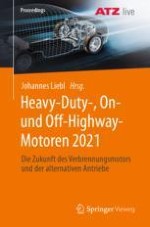2022 | OriginalPaper | Buchkapitel
CatVap® – the Efficient Heating Technology for Future Exhaust Aftertreatment Systems
verfasst von : Robert Szolak, Bernd Danckert, Paul Beutel, Florian Rümmele, Alexander Susdorf, Anand Kakadiya, Katharina Pautsch, Hammad Khalid, Achim Schaadt
Erschienen in: Heavy-Duty-, On- und Off-Highway-Motoren 2021
Verlag: Springer Fachmedien Wiesbaden
Aktivieren Sie unsere intelligente Suche, um passende Fachinhalte oder Patente zu finden.
Wählen Sie Textabschnitte aus um mit Künstlicher Intelligenz passenden Patente zu finden. powered by
Markieren Sie Textabschnitte, um KI-gestützt weitere passende Inhalte zu finden. powered by
